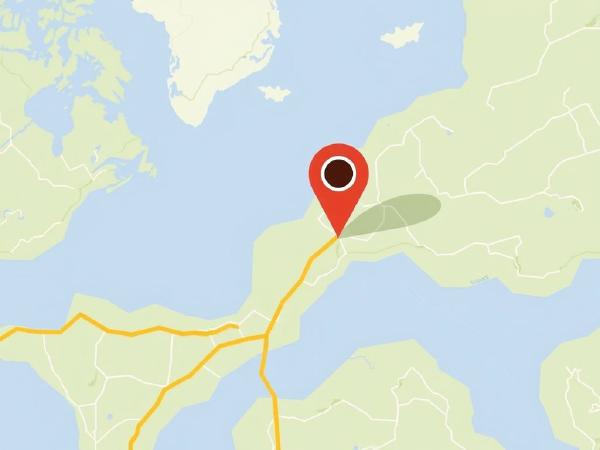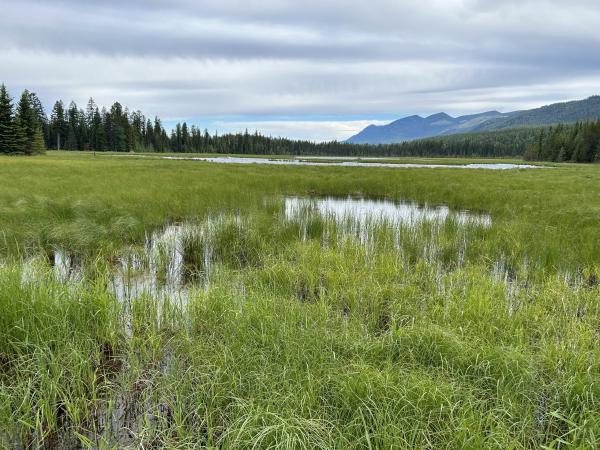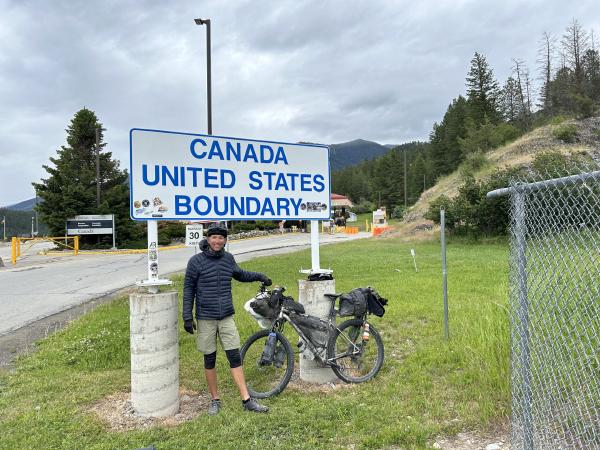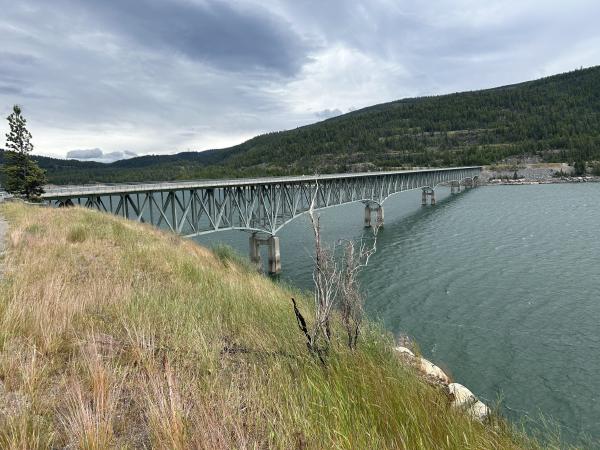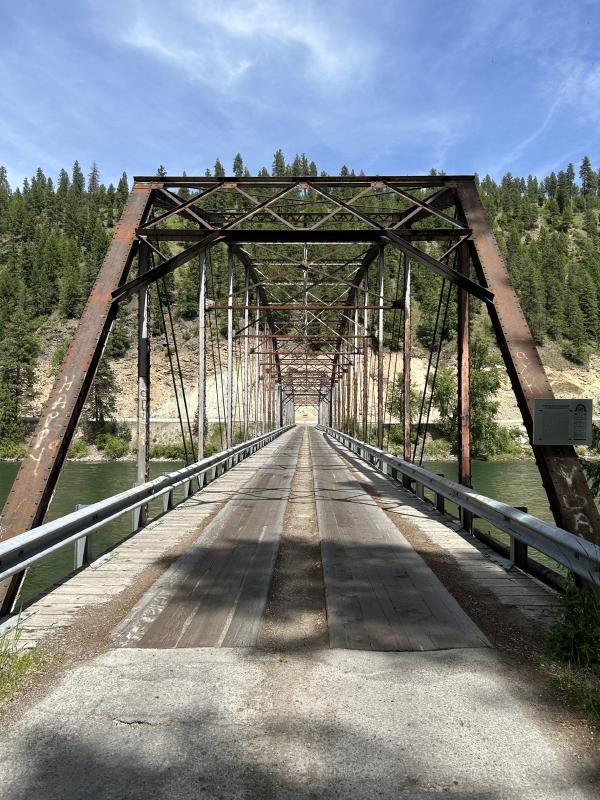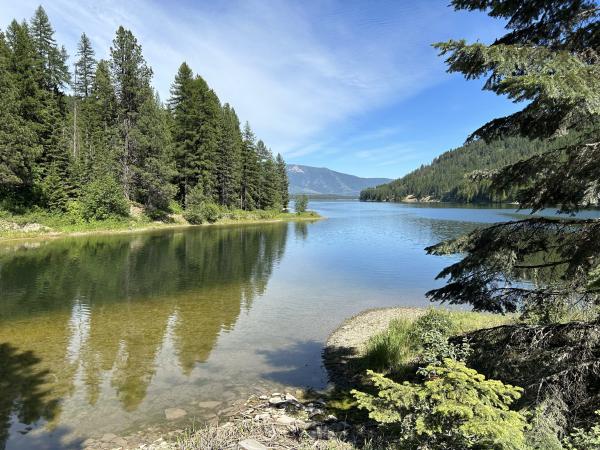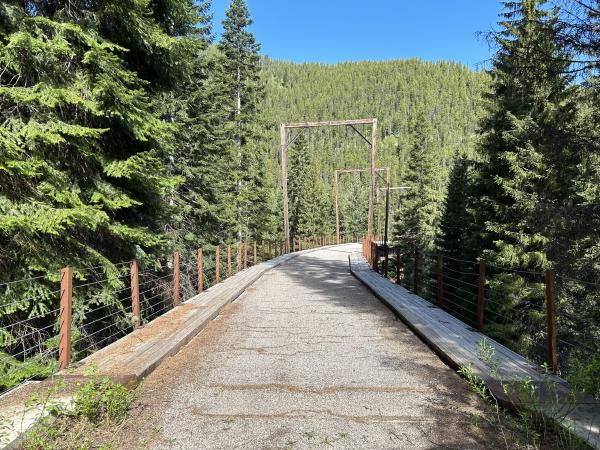Western Wildlands Route
Admin Jun 17, 2024“The 2,700-mile Western Wildlands Route (WWR, formerly known as the Wild West Route) offers bikepackers a non-technical riding experience through the vast expanses of wild and public lands in the Intermountain West. Nearly 70% of the route is on public lands - 18 National Forests, 6 National Parks and Monuments, and 4 areas with Bureau of Land Management National Conservation Lands designation.”, according to Bikepacking Roots. This route took us 12 days, 8 hours, 40 minutes, and 9 seconds of cycling time to cover 4312 km (2679 miles), including 47660 m (156372.46000000002 ft) elevation gain, with an average speed of 15 km/h (9 mph), reaching a maximum speed of 63 km/h (39 mph) on Saturday, June 1, 2024. During cycling, there was a minimum temperature of 0 °C (32 °F) on Thursday, May 30, 2024, and a maximum temperature of 50 °C (122 °F) on Friday, June 7, 2024.
Continue readingGreat Divide Mountain Bike Route
Admin Sep 12, 2022“The Great Divide Mountain Bike Route (GDMBR) is Adventure Cycling’s premier off-pavement cycling route, crisscrossing the Continental Divide in southern Canada and the U.S. This route is defined by the word “remote”. Its remoteness equates with spectacular terrain and scenery. The entire route is basically dirt road and mountain-pass riding every day. In total, it has over 200,000 feet of elevation gain. Nearly 2,100 miles of the route is composed of County, Forest Service, Bureau of Land Management (BLM), and Canadian provincial unpaved roads.”, according to the Adventure Cycling Association.
Continue readingLatest posts
Where am I?
EvE Jun 17, 2024Do you want to know where I am? So do my family and friends. Riding the Western Wildlands Route is a multi-week adventure, often without any connectivity for days. I bought myself a SPOT tracker for its SOS capabilities. However, it also provides tracker options. The tracker option of my SPOT device is configured to send my location every 10 minutes (when moving). My progress is plotted in a blue line, and a marker shows my last known location. The grey line is a projected route that I downloaded from the Internet during my preparations.So it might not exactly reflect the route I will be riding.
Continue readingDay 40: Cycling to Whitefish for our flight back home
EvE Jun 17, 2024Today we cycled from the Stillwater Lake Campground via Whitefish to the Lasalle RV Park. We had clouds all day, it was chilly and cold at times, and after setting up the tent it started to rain. We rode on non-paved roads until Whitefish, from there it was paved. Riding statistics: on Monday, June 17, 2024, day 48 on the route, it took 07:31h (04:39h moving time), between 6:50 and 2:21, to cover 70.11674 km (43 miles), including 728 m (2389 ft) elevation gain, with an average speed of 15.0 km/h (9.3 mph), while reaching a maximum speed of 48 km/h (29.8 mph). During this ride the average temperature was 8 °C (46 °F) with a minimum of 2 °C (36 °F) and a maximum of 14 °C (57 °F).
Continue readingDay 39: Reaching the end of the WWR
EvE Jun 16, 2024Today we cycled from the Tobacco River Campground to the Canadian border, and from there to the Stillwater Lake Campground on our way to Whitefish. The day was clouded. In the morning there was a partial blue sky in the east, but it did not reach us. We clouds, some rain, some hail, and some sun today. In the morning we rode paved roads to the border and Eureka. A little after Eureka we rode on gravel and double-track.
Continue readingDay 38: The end of the summer weather
EvE Jun 15, 2024Today we cycled from the Kilbrennen Lake Campground to the Tobacco River Campground 18mm before the Canadian border. The day started completely clouded, and as forecasted, the rain started at 10:30. After 13:00 it became better again with one or two short rain showers. We rode non-paved for most of the day, only a few kilometers on paved roads. Riding statistics: on Saturday, June 15, 2024, day 46 on the route, it took 10:00h (06:48h moving time), between 6:51 and 4:52, to cover 113.30819 km (70 miles), including 1469 m (4820 ft) elevation gain, with an average speed of 15.0 km/h (9.3 mph), while reaching a maximum speed of 48 km/h (29.8 mph). During this ride the average temperature was 10 °C (50 °F) with a minimum of 6 °C (43 °F) and a maximum of 21 °C (70 °F).
Continue readingDay 37: A deli at the perfect location
EvE Jun 14, 2024Today we cycled from our dispersed campsite at the Noxon Reservoir to the Kilbrennen Lake Campground. We had blue skies with a few clouds. The road surfaces were a mixture of paved and non-paved. Riding statistics: on Friday, June 14, 2024, day 45 on the route, it took 10:00h (06:48h moving time), between 6:51 and 4:52, to cover 112.50171 km (70 miles), including 1419 m (4656 ft) elevation gain, with an average speed of 17.0 km/h (10.6 mph), while reaching a maximum speed of 48 km/h (29.8 mph). During this ride the average temperature was 25 °C (77 °F) with a minimum of 12 °C (54 °F) and a maximum of 42 °C (108 °F).
Continue readingDay 36: The campsite that was not there
EvE Jun 13, 2024Today we rode from the City Limits RV Park in Wallace to a dispersed campsite at the Noxon Reservoir. We had blue skies all day. We rode a quarter of the distance on a quiet paved road and the other half on non-paved (gravel, double-track, loose sand, etc). Riding statistics: on Thursday, June 13, 2024, day 44 on the route, it took 10:47h (07:49h moving time), between 6:01 and 4:49, to cover 106.41236 km (66 miles), including 1710 m (5611 ft) elevation gain, with an average speed of 14.0 km/h (8.7 mph), while reaching a maximum speed of 43 km/h (26.7 mph). During this ride the average temperature was 21 °C (70 °F) with a minimum of 3 °C (37 °F) and a maximum of 35 °C (95 °F).
Continue readingDay 35: The Hiawatha Trail
EvE Jun 12, 2024Today we cycled from our dispersed campsite on the Olympian Trail to the City Limits RV Park in Wallace. We had blue skies all day. A little bit of a breeze which felt chilly sometimes. We road non-paved all day, except in the town of Wallace. Riding statistics: on Wednesday, June 12, 2024, day 43 on the route, it took 11:02h (07:53h moving time), between 6:56 and 5:59, to cover 97.756 km (60 miles), including 1208 m (3963 ft) elevation gain, with an average speed of 15.0 km/h (9.3 mph), while reaching a maximum speed of 44 km/h (27.3 mph). During this ride the average temperature was 21 °C (70 °F) with a minimum of 4 °C (39 °F) and a maximum of 42 °C (108 °F).
Continue readingAbout
This is my personal blog on which I keep family and friends updated about my bikepacking adventures.
